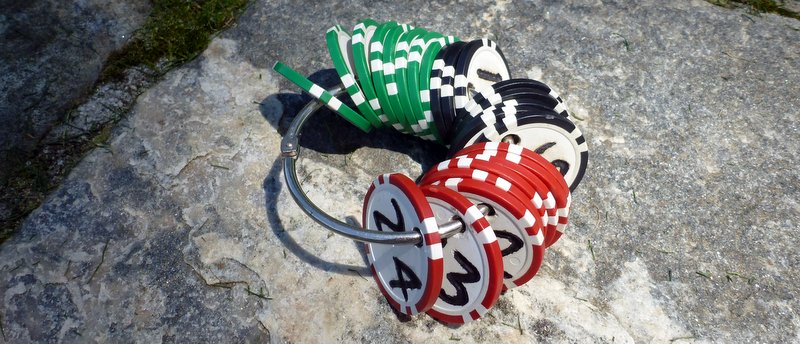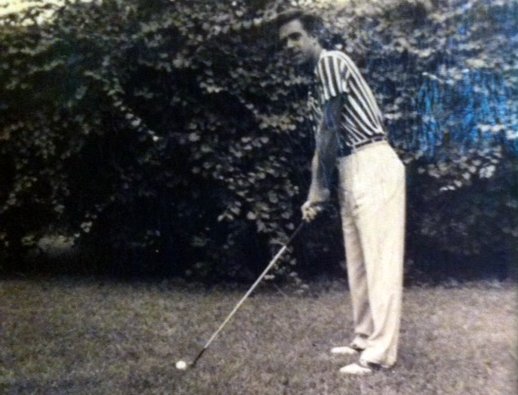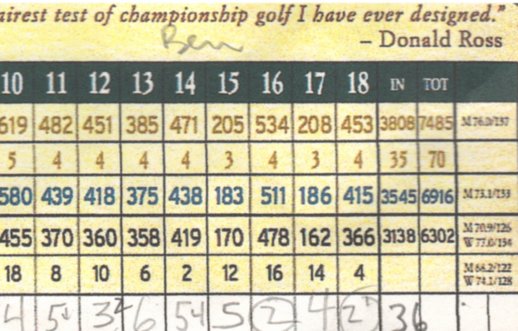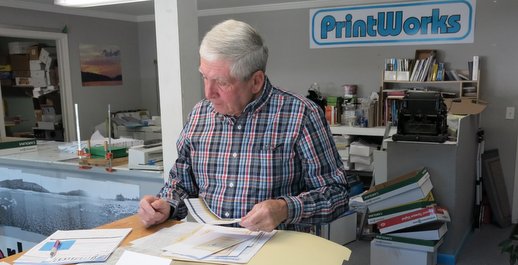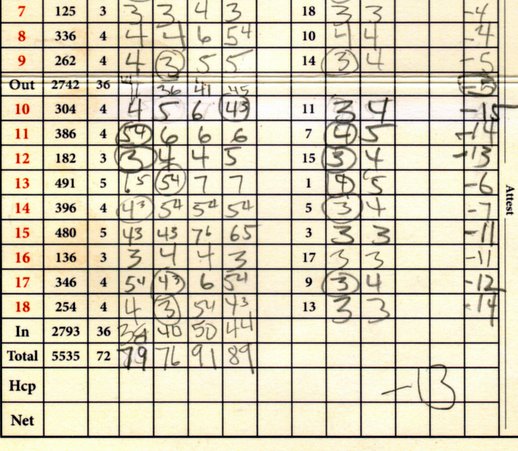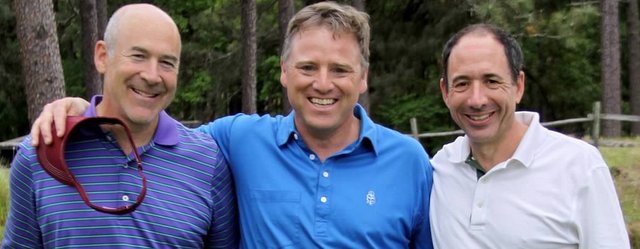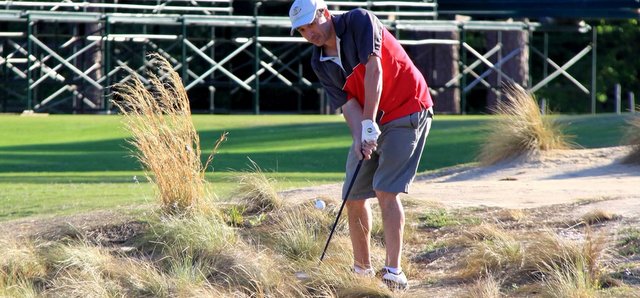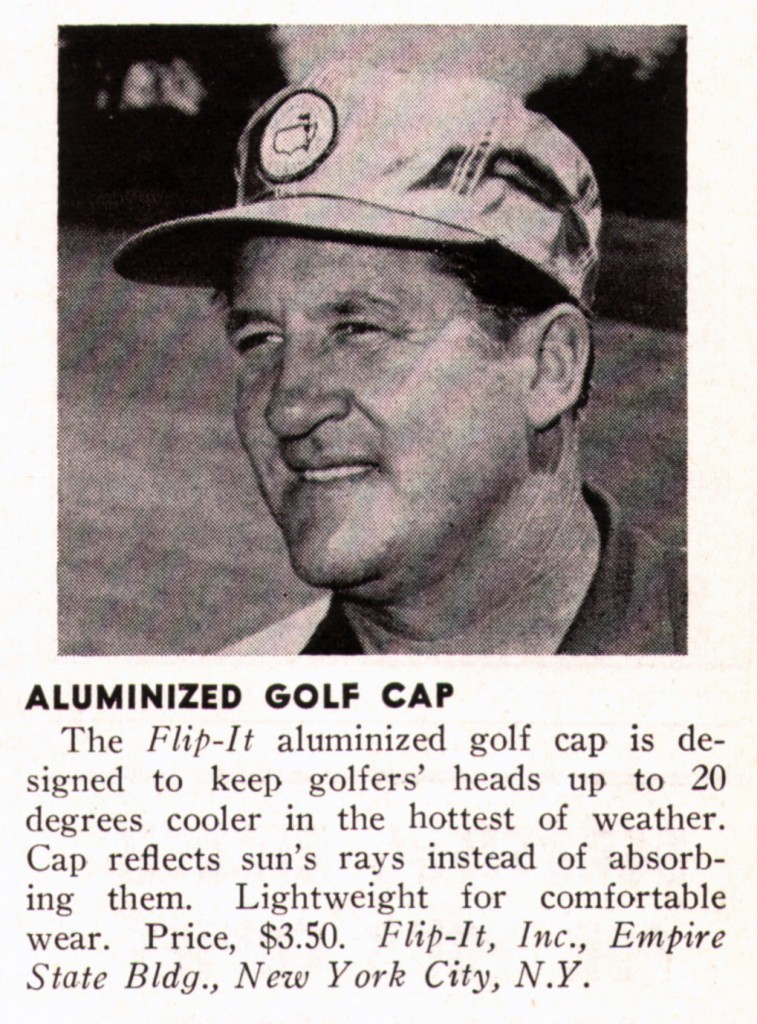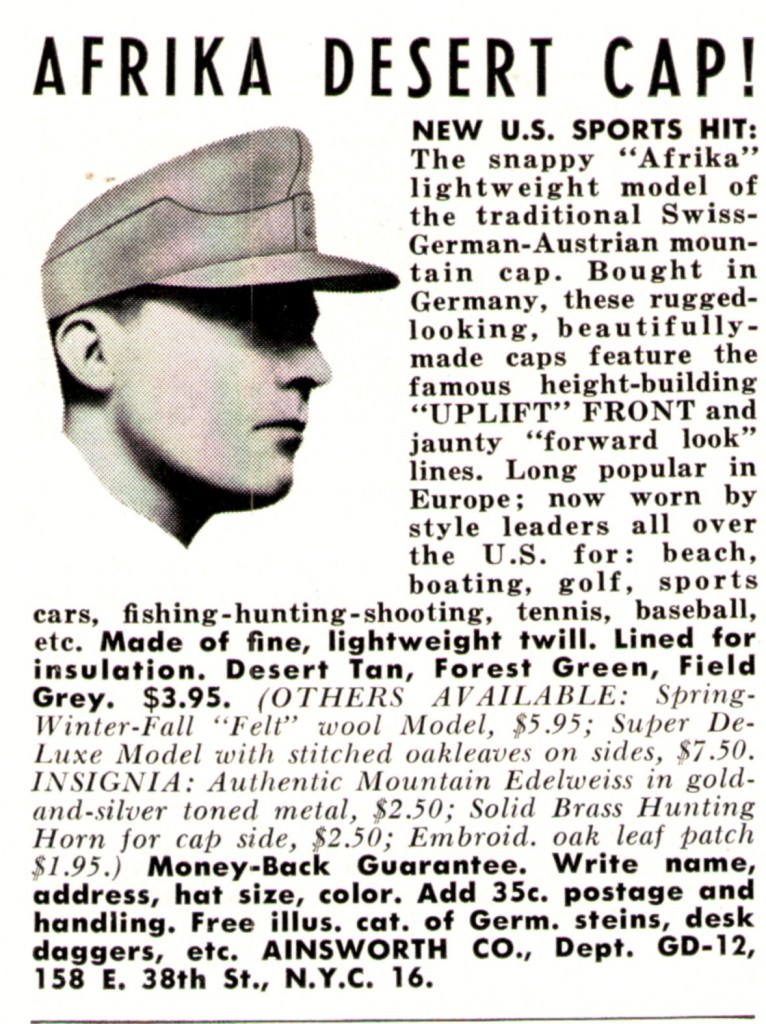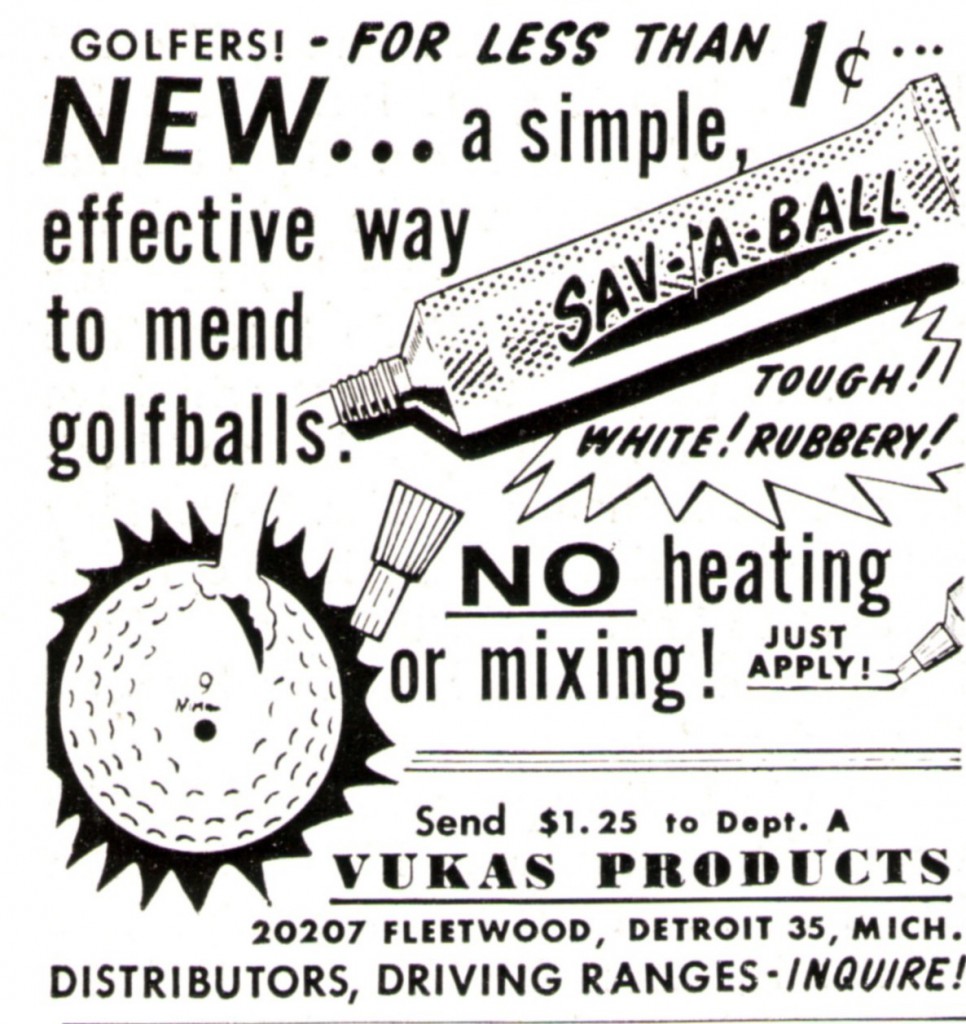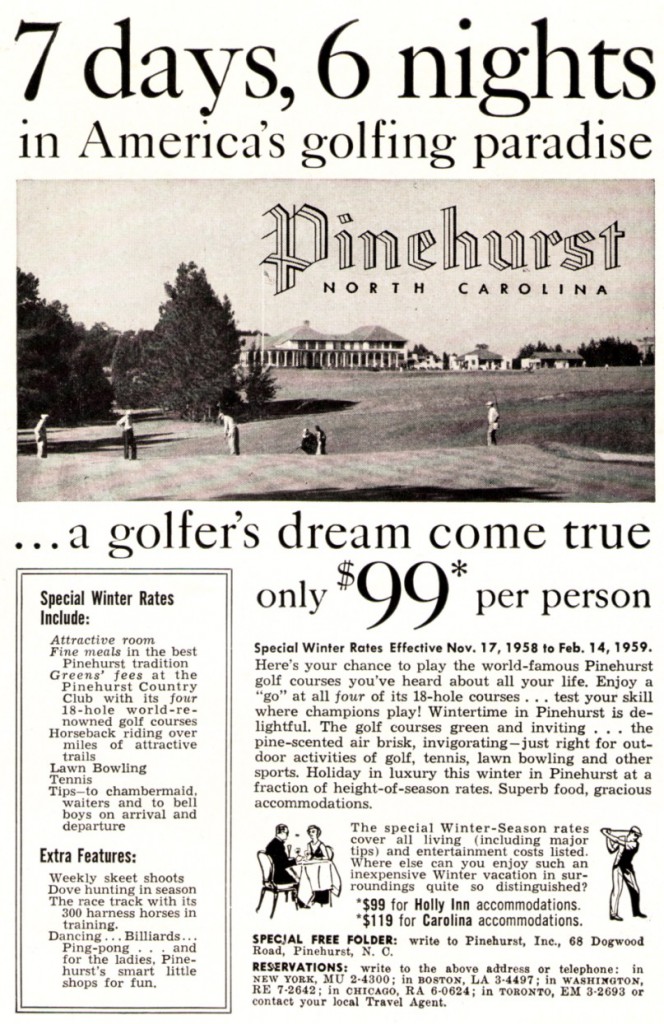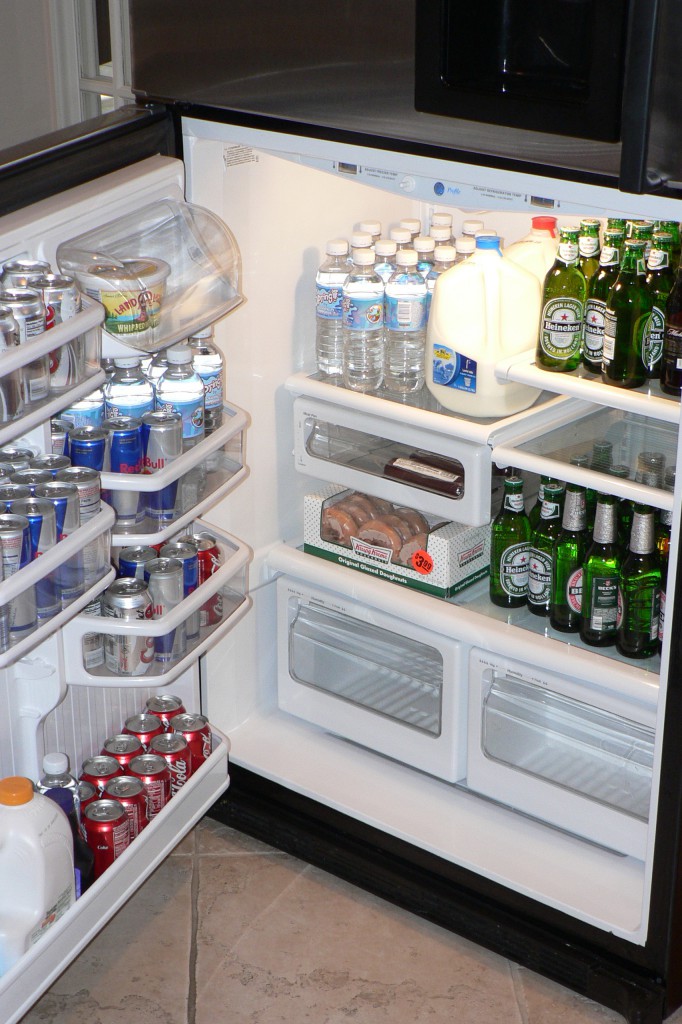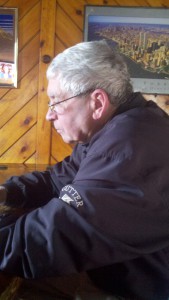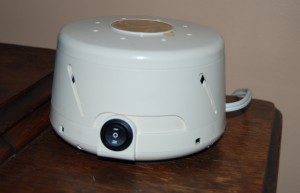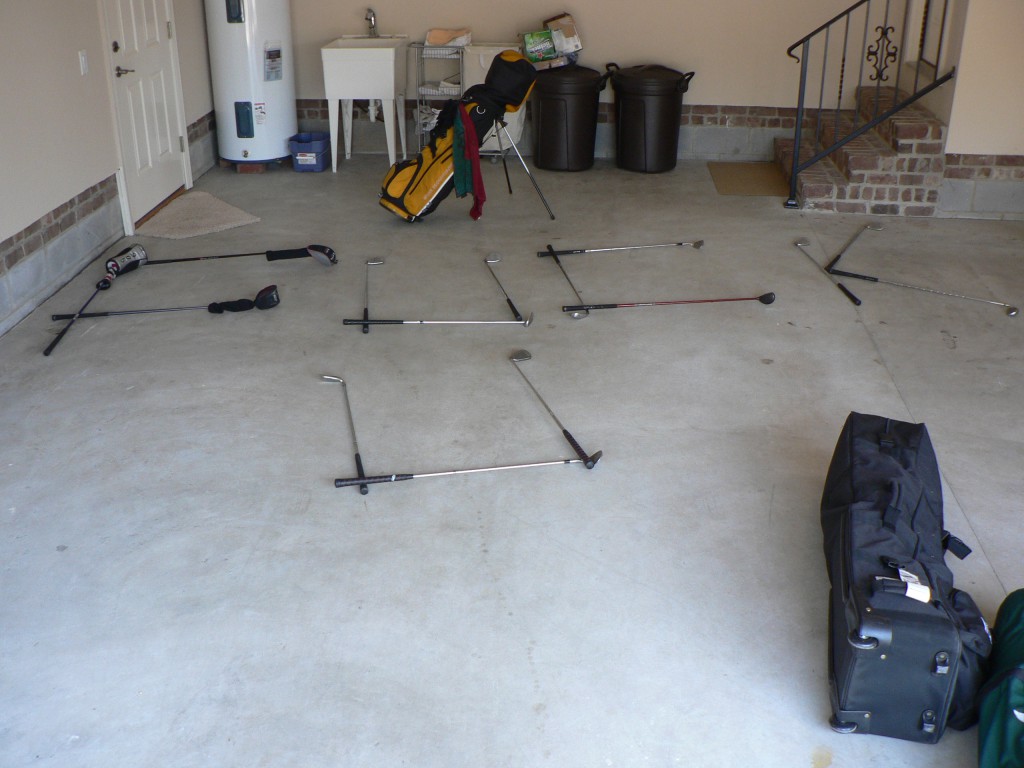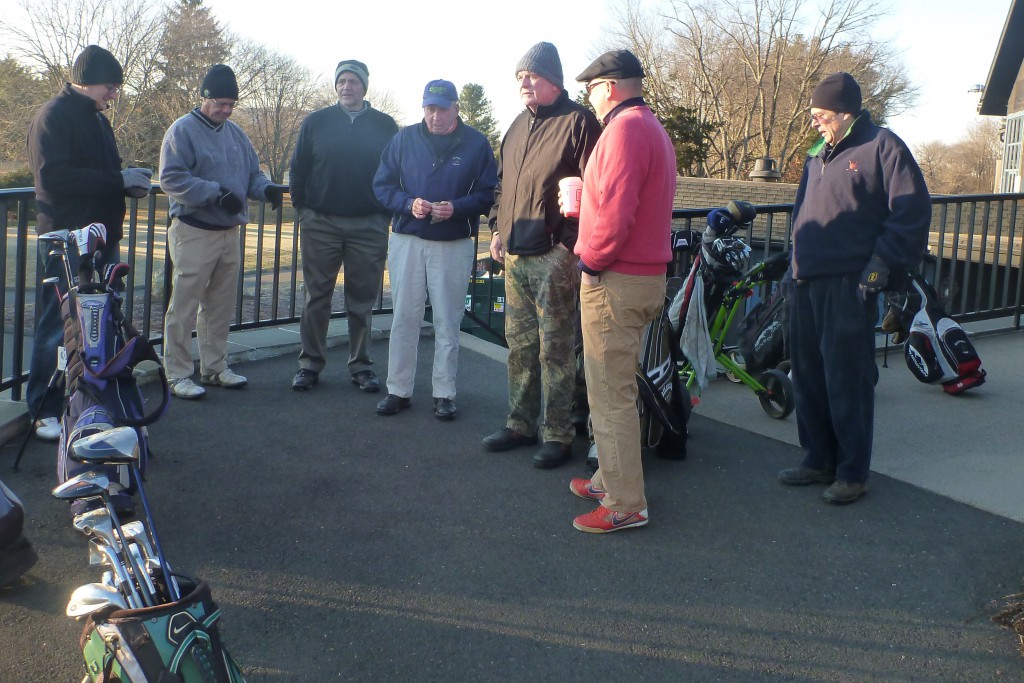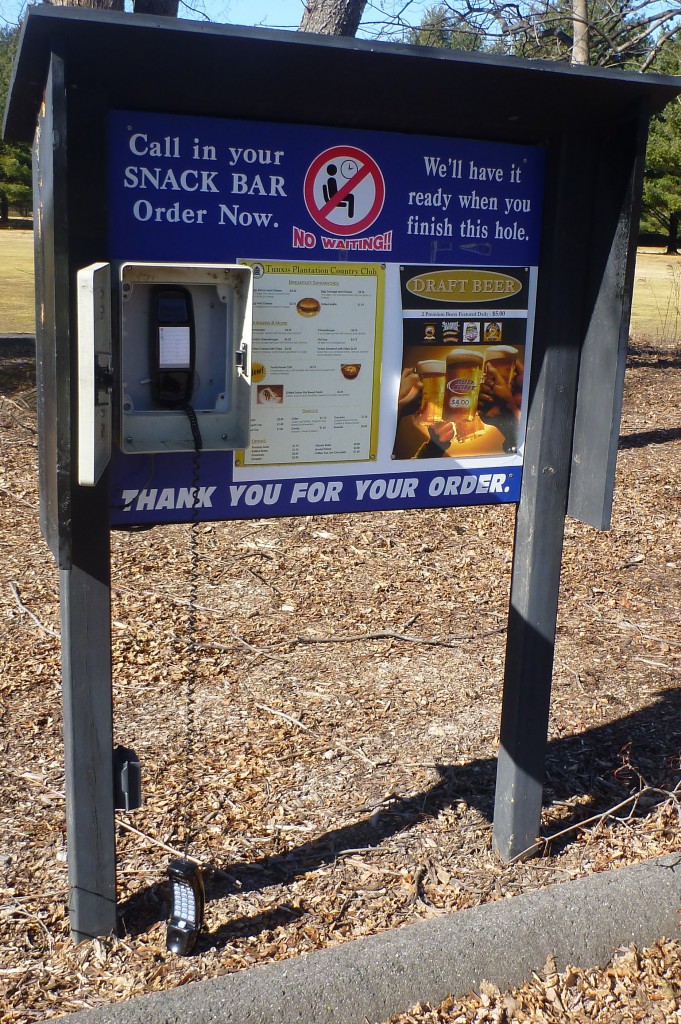My wife sent me this. It sounds exactly like the bedroom I shared with two friends on a golf trip to Pinehurst twelve years ago. Note, in particular, the classic leg lift:
Tag Archives: Pinehurst
The Ideal Scorecard for a Tensome, Plus a Record Turnout
We had thirty guys on Sunday, which was both Father’s Day and the final round of the U.S. Open. Thirty is a record for us, so we took a photo (see above). We chose teams the way we always do, by drawing numbered poker chips from a hat, but we had only twenty-four chips, so we had to fudge things. That evening, at home, Rick made us six more.
I was on the lookout for guys who hadn’t been able to play because it was Father’s Day—a sore point for me—but according to my informal investigation there was only one: young Dr. Mike, who was said to be absent for reasons related not only to Father’s Day but also to his wife and tennis. Reese and Addison weren’t there, either, but they (along with Addison’s brother, Harris, who works in the golf shop part-time) were in Pittsburgh visiting their father/grandfather, also Reese, who is ninety-two. He can’t play anymore, but he rode in the cart while his son and grandsons played, so no one missed any golf:
Addison and Harris’s other grandfather is also a golfer. In fact, he was the No. 1 player on the golf team at Wake Forest at a time when the No. 2 player was Arnold Palmer. His name is Ray, and he still plays. Here’s what he looked like in his prime:
Because Sunday was the final day of a major, the Sunday Morning Group used the scorecard from the course where the major was being played, Pinehurst, instead of our own. I won a skin on No. 18 because on the Pinehurst card I get a stroke on that hole, and the stroke turned my miracle eagle (approach shot into the hole) into a miracle net hole-in-one.
So good for me. (Pinehurst, like a number of clubs, assigns handicap stroke indexes in a dumb way, and I will write about that at some point.) This coming Sunday, we’ll be back to using our very own, brand-new Sunday Morning Group scorecard. It was designed mainly by Hacker (real name). Here he is, studying a proof:
Our new card is much smaller than our old card—just 3.25 by 5 inches once it’s folded in half—but it has enough spaces for a tensome, or for a fivesome playing five simultaneous games:
The cards were created for us by PrintWorks, a small graphic-design and printing shop in the next town. This is Doug, who runs the shop with his mother. He cheerfully put up with dozens of picky last-minute design changes:
Doug gave us such a good deal on our scorecards that PrintWorks is now the official provider of graphic services to the Sunday Morning Group. Everyone who reads this should be sure to have something printed there this year, to ensure that they’ll still be in business the next time we need scorecards, business cards, letterheads, envelopes, flyers, brochures, posters, postcards, or any of the other stuff they specialize in. (Doug also printed waterproof scorecards for us, for rainy days, and I’ll tell you about those soon.) Our new scorecards have our rules printed right on the back, for easy reference:
Incidentally, that record score, at the bottom of the card, is nine over par net. No one in SMG history has ever played worse.
Reader’s Trip Report: Pinehurst, North Carolina
This year’s U.S. Open and the U.S. Women’s Open will be held at Pinehurst during consecutive weeks, beginning on June 12 (for the men) and June 19 (for the women). The U.S.G.A. has never tried that before, although my club has done it successfully with the men’s and women’s member-guests. Adam Sachs, a reader in Kansas City, recently traveled to Pinehurst with three friends to check things out.
Sachs is the guy in the middle in the photo above. The guy on the left is Steve Swartzman, and the guy on the right is Chip Fleischer, whose fiftieth birthday was their excuse for taking the trip. They all went to high school together. We haven’t met Glenn Jordan, the fourth member of the group, yet, but you get the idea.
Pinehurst No. 2 is definitely bucket-list material, but from now on my destination courses in the area will be Pine Needles and Mid Pines, just five miles down the road. Pine Needles has hosted three U.S. Women’s Opens in the past twenty years, yet the clubhouse personnel were low-key and friendly; the practice area was conveniently close to the first tee; and the golf course was full of rolling hills and (of course) pine needles. Our hands-down favorite course of the trip was Mid Pines:
I myself haven’t been to Pinehurst in about ten years, and I want to go back. And here, finally, in the photo below, is Jordan, the fourth man. He’s standing with Swartzman, even though the guy he went to college with is Fleischer. Jordan is a sportswriter for the Portland (Maine) Press-Herald.
Five Holiday Gift Ideas for Golfers
It’s never too early to start shopping for the golfer in your family. These gift ideas are from the pages of Golf Digest in the late 1950s and early 1960s:
This item is from 1957, when golf, cocktail-drinking, and home refrigeration were all ascendant in the United States. U.S. Royal was a trade name of the United States Rubber Company, which renamed itself Uniroyal in 1961. It no longer makes golf balls, although it may still make ice trays.
The reflective metallic golf hat, also from 1957, is an idea that never caught on, for unknown reasons. The hat was probably most useful in match play, since by standing in the right place and tilting your head you could temporarily blind your opponent. The logo notwithstanding, I don’t think anyone ever wore one in the Masters.
Wehrmacht surplus? Somebody must have bought a load of these, because they were advertised all over, and not just in golf publications. This ad is from 1960. Hats like this are still available, although they’re of interest mainly to Third Reich fetishists.
Also from 1960. Golf ball repair is a concept that doesn’t really exist anymore.
This ad is from 1958, but versions of it ran for several years. The price is per week, not per night, and it includes room, golf, meals, tips, and just about everything else. (Dove hunting may have been extra.) Today, you’d pay almost as much at Pinehurst for a dozen Pro V1s.
Don’t see anything you want? More gift ideas soon.
How to Take a Golf Trip With Friends
My regular golf buddies and I have taken many trips together, and, by trial and error, we’ve learned a lot about what works and what doesn’t. Here are some tips:
http://theygotodie.com/2011/04/13/1903-8/ Do give one person the overall responsibility for managing the itinerary, keeping track of reservation deadlines, reminding laggards to make their deposits, and deciding which minor tasks can safely be delegated. Having a single, reliable leader makes it less likely that critical details (such as tee times) will be forgotten, and creates a clear blame path if things go wrong.
http://vbrisket.com/2016/05/ Don’t automatically assume that nobody will be up for more than eighteen holes a day or (equally important) that everybody will. During a buddies trip that eight friends and I took to Scotland in 2008, we designated one round as the official eighteen for each day, so that oldsters could flake out in the afternoon without losing their place in the standings. On the final day of an earlier, ten-day trip to Ireland, when even the golf obsessives had begun to fade, we revived everyone’s spirits by playing a scramble in the afternoon.
Do establish a centralized rule-making authority with the power to silence whiners, naysayers, and independent thinkers. Among my friends, this authority is called the Committee, and it typically consists of Hacker (real name) plus one or two people who, over the years, have satisfied Hacker that they are likely to agree with him. The Committee has many responsibilities, including picking the games, choosing the stakes, deciding whether or not Gene will be allowed to play from the senior tees, and settling minor but potentially divisive issues as they arise, such as do we get a first-tee do-over or not, and what about handicap strokes on par-threes? The Committee’s decision is always final—a relief to most people, who go on golf trips to escape their current responsibilities, not to acquire new ones.
Don’t allow trip-threatening behavior to go unpunished. On the second morning of our annual Atlantic City trip a few years ago, one foursome drove to the wrong golf course (with Hacker, of all people, at the wheel), even though all five cars had left our hotel at the same time and everybody had been given printed driving directions. The resulting confusion came close to ruining the whole trip, or so we said. When the round was over, we restored order by conducting a trial in the clubhouse—taking advantage of the fact that two of the participants that year were lawyers—and sentenced the offenders to pay for everybody’s lunch.
Do collect all wagers before anyone tees off. Losers always outnumber winners, and on a large golf trip that means that if the prize money isn’t in hand when the scores are tabulated the victors will have to collect from a sullen mob. We handle this on our golf trips by collecting a single buy-in on the first morning of the whole trip—currently, a hundred bucks a man—and paying all prizes for the trip out of that fund.
Don’t let the stakes get out of hand. The purpose of playing for money is to make three-foot putts seem important, not to let anyone get rich. We try to spread the prize money around by having lots of complicated side bets, all paid off from the same hundred bucks. The big winner, furthermore, is expected to buy lunch on the last day.
Do establish community-building trip traditions, such as our rule that recovering alcoholics drink free.
Don’t feel you have to do everything as a group. We often split up for dinner, primarily to eliminate tedious late-afternoon arguments about who is willing to pay how much to eat what. Doing this also occasionally generates interesting demographic data, as it did on the night when (as someone realized later) all the Democrats went to a sushi bar while all the Republicans went to Outback. (Figuring out that this had happened took some deductive work, because in our group, as in all successful golf groups, we almost never mention politics, even with people we agree with.)
Do be careful about the guest list. We usually open up our trips to friends from outside our club, and even to friends of friends. This has beneficially expanded our acquaintance with overweight middle-aged men from outside our immediate geographical area, but it has occasionally led to problems. One year, one guy invited an old high-school friend of his, whom he hadn’t seen in years. The old friend, who began drinking as soon as he got into Hacker’s car, bought a dozen condoms at a convenience store during the first refueling stop, then stashed the box under his seat and forgot all about it. A week after we got back, Hacker’s wife discovered the condoms and—here’s the problem—didn’t believe, even for a minute, that they belonged to any of us.
Don’t let a buddies trip end without establishing a Committee to pick the next destination.
Snoring Golfers
Nighttime noise is an issue when you travel with grown men. On a ski trip when my kids were in high school, I shared a room with two other fiftyish dads and spent much of the night trying to decide which was more annoying, the chainsaw-like snoring or the innumerable brief trips to the bathroom. When my friends and I travel for golf, we try to pair the snorers and coughers with the heaviest sleepers, and make sure that the guy with the anti-apnea machine shares a room with someone who likes white noise. I myself employ two snoring-related sleep aids: gumdrop-size silicone ear plugs and a vaguely wishbone-shaped appliance called a Nozovent, which sprongs my nostrils wide open. (One night, while my wife and I were getting ready for bed at home, I groggily inserted my earplugs into my nose instead of my ears—as the first one went in, I thought, Whoa, time to buy some fresh ones—then realized what I had done and laughed so hard I nearly suffocated.) On a golf trip to Pinehurst in 2006, I shared a room with two friends. One was a world-class snorer, but the noise he made, though extraordinarily loud, was so steady that it was easy to sleep through. What woke me was a fart (same guy)—like exploding a paper bag. My entire body rose about six inches from my mattress, and it took me a while to get back to sleep. At the bottom of this post is a picture from that trip.
After the death of my father, whose snoring was audible throughout our house, my mother gave me his old white-noise machine, a Marpac Sound Screen. My wife and I keep it in the kitchen—for our dog, Henry, who barks in the middle of the night if he hears raccoons knocking over the cat-food dishes on our back step. Half a dozen friends and I are taking a golf trip to Ireland in April. We’ve all decided to splurge on single rooms, but if we hadn’t I’d take the Marpac with me.
Up Early
This morning, eight of us played at Tunxis Plantation. We arrived at 7:30 and stood around talking and drinking coffee for an hour and a half (first photo), as we waited for the frost to melt (second photo) and for the golf shop to open. When the all-clear sounded, we teed off first and, with no one ahead of us, played as fast as we do at home.
I had trouble sleeping last night, as I often do before I play golf. Even now, twenty years after I took up the game, waiting for golf still feels like waiting for Santa Claus. During the season, I set my alarm for 6:00 on Sunday mornings—unnecessarily, because I’m usually awake and squinting at the dial by 5:00 or 5:30, if not by 4:00: isn’t it time to put on my golf clothes yet? I click off the clock a few minutes before it would have buzzed, and tiptoe downstairs without waking my wife.
Six or seven years ago, during my Sunday Morning Group’s annual end-of-season trip to Atlantic City, Hacker (real name) got up, took a shower, woke up his roommate and told him to take a shower, went down to the lobby of the hotel where we were staying, sat in the dark in the empty coffee shop for a while, and then looked at his watch more closely and realized it was 3:30, not 6:30. Hacker has trained himself to wake up without an alarm clock, but he loves golf so much that his internal timekeeping mechanism sometimes jumps a few hours ahead. In Pinehurst once, he got up, took a shower, woke up his roommate and told him to take a shower, went downstairs in the house where they were staying, and found a couple of guys in the living room drinking beer and watching TV. “Kind of early for that, isn’t it, guys?” Actually, no: it was just a little past midnight, an hour after Hacker and his roommate had gone to bed. A street lamp near his window had fooled him into thinking the sun was coming up.


